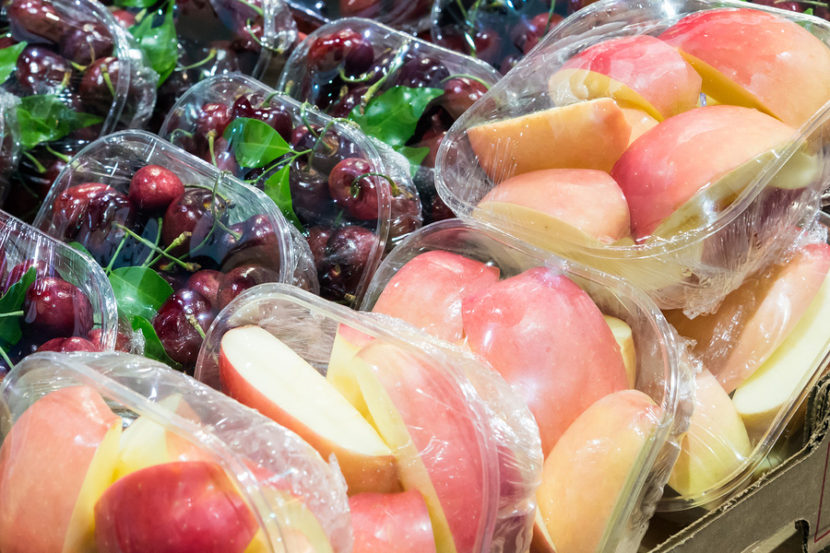Extending the Shelf Life of Agricultural Products: Five Approaches for Success
By: Gaganpreet Kaur Saini
Agricultural products are highly perishable, which makes shelf life a vital issue for growers, processors and retailers. Shelf life itself is defined as the period of time a food has before it is considered unsuitable for sale or consumption, and, for fresh agricultural products, this can vary considerably, depending on multiple factors. The key consideration behind the post-harvest shelf life of agricultural products is the fact that they continue to function as living organisms via the respiration process even after they are gathered. Agricultural products respire after harvest by using stored energy and oxygen.
Brand Damage
It’s important to extend the shelf-life of agricultural products not only to reduce food waste, but also to eliminate the risk of food-related illness from mould or pathogen contamination. Waste can have a significant financial impact on a food business, and substantial brand damage can occur if a business develops a reputation for consistently delivering inedible fruits and vegetables. Essentially, short shelf life significantly affects growers, processors, retailers and consumers alike. All these factors make considering new technologies to extend the shelf life of agricultural products a great idea.
Essentially, short shelf life significantly affects growers, processors, retailers and consumers alike.
Surveys report that roughly one-third of the food produced in the world every year for human consumption—i.e. approximately 1.3 billion tonnes—is wasted. This waste amounts to roughly US $ 680 billion in developed countries and US $ 310 billion in developing countries. Global qualitative food losses or wastage per year amounts to approximately 40-50% for root crops, fruits and vegetables.
New techniques employed to extend the shelf life of agricultural products include:
1. Modified Atmosphere Packaging (MAP), which substitutes the atmospheric air inside a package with a protective gas mix to help extend product freshness.
2. Controlled Atmosphere Storage (CAS), where the concentrations of oxygen, carbon dioxide and nitrogen, as well as the temperature and humidity of a storage room, are regulated.
3. Cold Chain Technology, which is an unbroken temperature-controlled supply chain that carries produce through an uninterrupted series of refrigerated production, storage and distribution steps.
4. Thermal Postharvest Treatments, such as a hot water dip, saturated water vapour heat, or hot dry air. These are linked to a reduction in chilling injury and a delay in the ripening process, and can also kill insects and delay the onset of fungal decay.
5. Edible Coatings, which are thin external coatings applied to the surface of fresh produce. They help prevent moisture loss on the surface of produce during postharvest storage, and function as gas barriers, which slow respiration, aging and enzymatic oxidation.
Essentially, temperature, humidity and packaging tools can be used to monitor and extend the shelf life of the agricultural products. Temperature tools for products include thermometers, thermos-hygrometers, data loggers, and devices to measure product firmness and sugar content.
Packaging Tools
Packaging tools include different types of modified atmosphere. One commonly employed method injects oxygen, carbon dioxide and nitrogen into pallet covers or shipping containers, which results in modification in the air surrounding the agricultural products. Alternatively, additives can be directly incorporated into pallet wraps covering the product boxes e.g. ethylene adsorption packaging.
Temperature and humidity monitoring tools, as well as ethylene packaging tools, have significantly contributed to increasing the shelf life of agricultural products and minimizing losses. However, shelf life management for agricultural products has become more difficult to monitor and control because of the lengthening transport chains; and proper shelf life controls need to be in place for protecting consumers and reducing food waste.
About the Author
Gaganpreet Kaur Saini is Safety Coordinator (SQF Practitioner) for fresh produce company, Kiskadee Ventures Limited in Toronto. She received her PhD in Biotechnology from Punjabi University, Patiala, India with major in Fermentation Technology. She has five years’ experience in teaching and research in food technology and she has published extensively on the topic of food technology.

-
 FeaturedRisk management
The Cost of a Breach: What a Cyberattack Could Mean for Food Safety Recalls
FeaturedRisk management
The Cost of a Breach: What a Cyberattack Could Mean for Food Safety Recalls
-
 FeaturedRisk management
Securing the Food Chain: How ISO/IEC 27001 Strengthens Cybersecurity
FeaturedRisk management
Securing the Food Chain: How ISO/IEC 27001 Strengthens Cybersecurity
-
 FeaturedRisk management
Revolutionizing Food Safety Training: Breaking Out of the “Check-the-Box” Mentality
FeaturedRisk management
Revolutionizing Food Safety Training: Breaking Out of the “Check-the-Box” Mentality
-
 GFSI Standards
GFSI 2025: Building Trust, Tech-Forward Solutions, and Global Unity in Food Safety
GFSI Standards
GFSI 2025: Building Trust, Tech-Forward Solutions, and Global Unity in Food Safety
-
 FeaturedFood Safety
Integrated Pest Management: Strategies to Protect Your Brand’s Reputation
FeaturedFood Safety
Integrated Pest Management: Strategies to Protect Your Brand’s Reputation
-
 FeaturedFood Safety Culture & Training
No Open Door Policy: Challenges That Impact Pest Control in Food Processing Plants
FeaturedFood Safety Culture & Training
No Open Door Policy: Challenges That Impact Pest Control in Food Processing Plants




